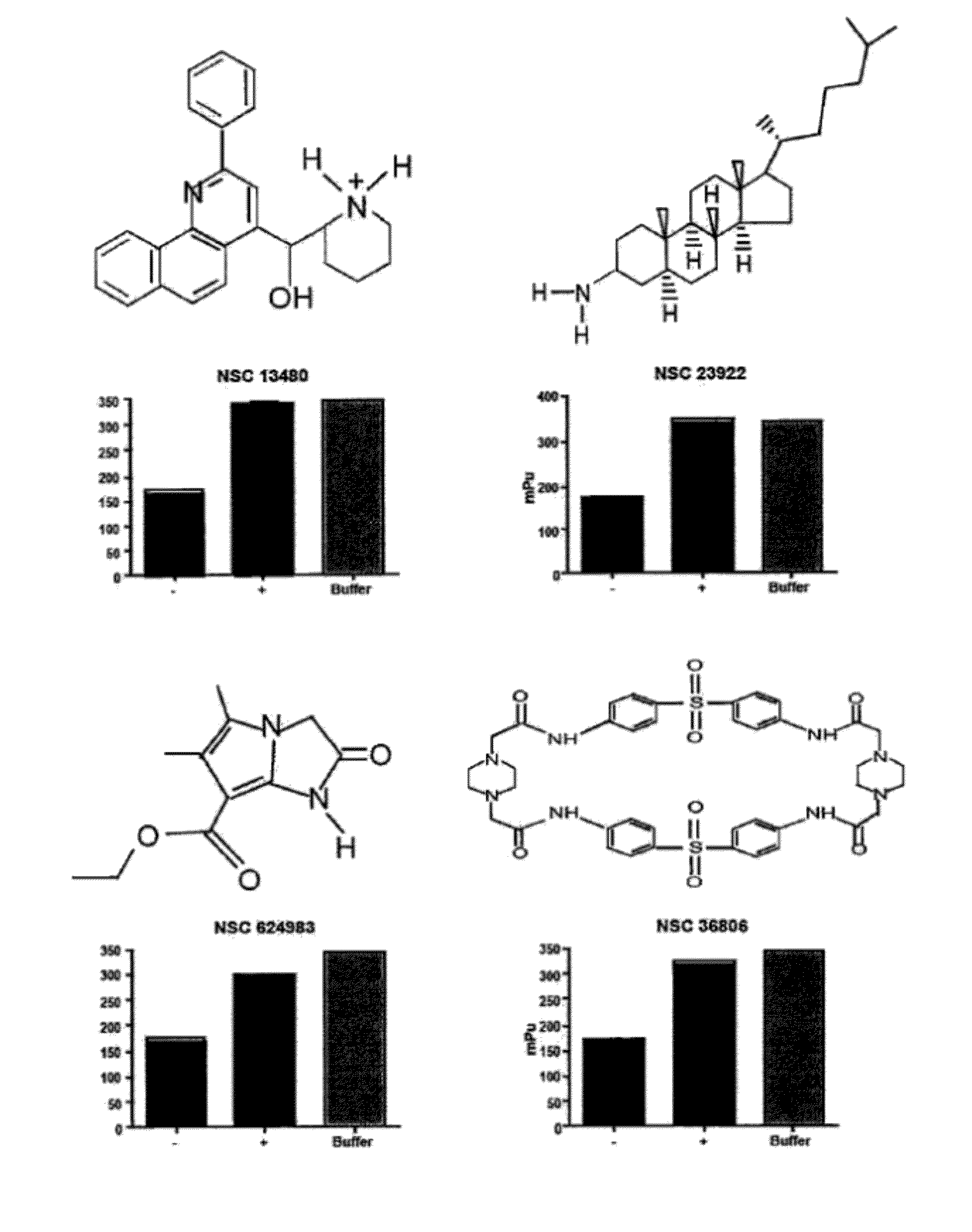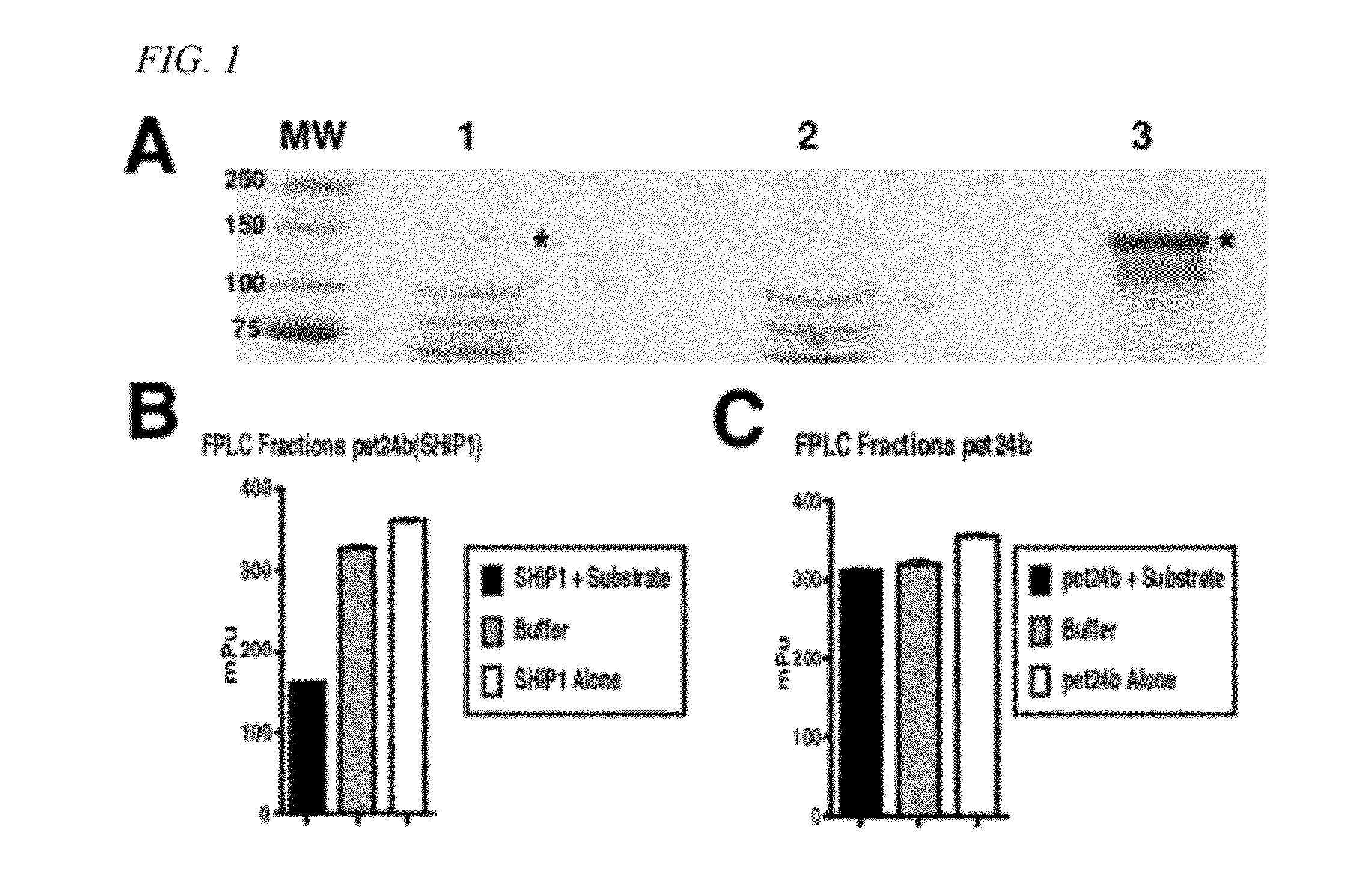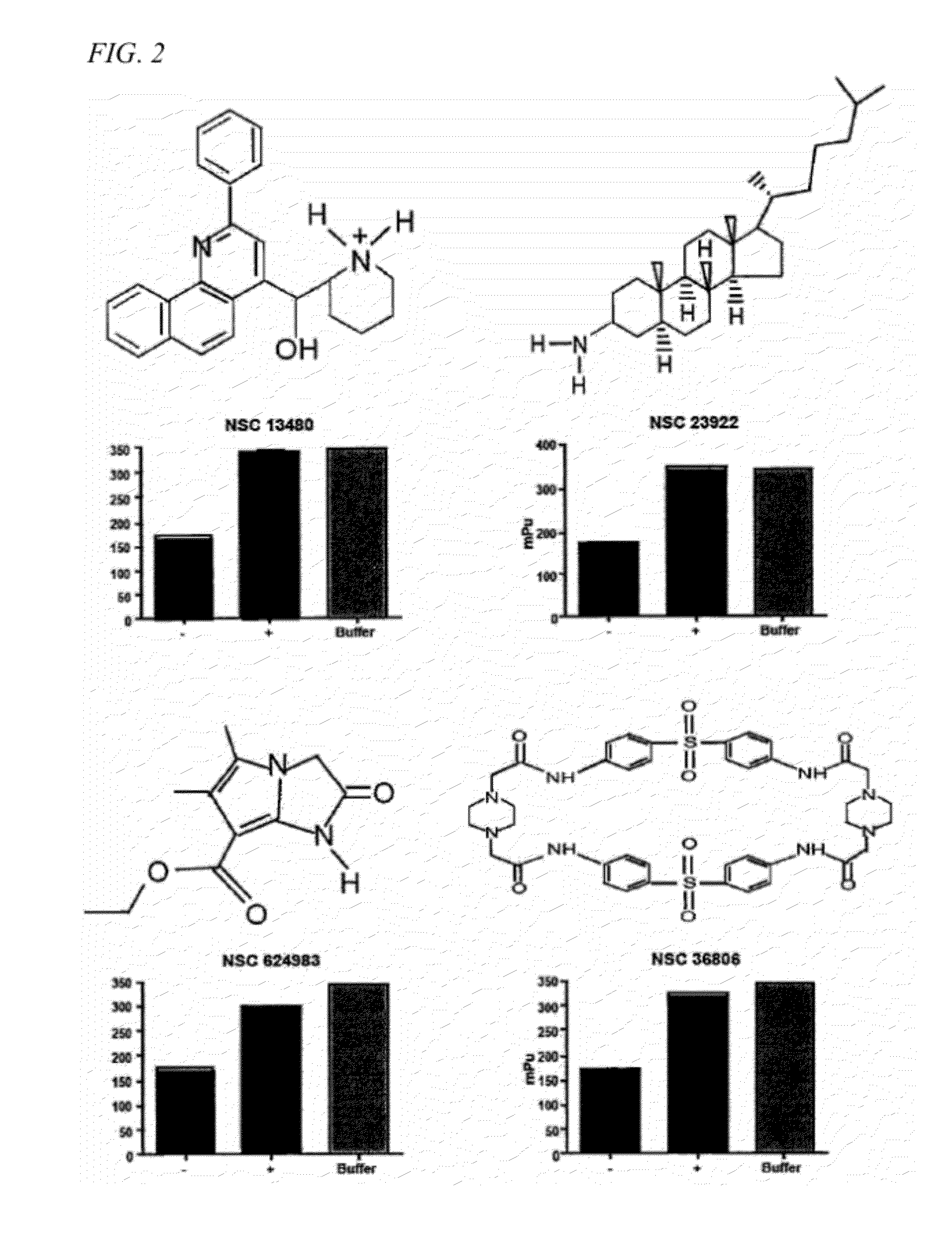Method of modulating ship activity
- Summary
- Abstract
- Description
- Claims
- Application Information
AI Technical Summary
Benefits of technology
Problems solved by technology
Method used
Image
Examples
example 1
Expression, Purification and Measurement of Recombinant SHIP Activity.
[0092]An E. coli based system was developed for expression of recombinant SHIP, as shown in FIG. 1a, to allow the efficient screening of chemical libraries for compounds that inhibit SHIP's enzymatic activity. SHIP is detectable in this expression system as a ˜145 kD protein (FIG. 1a, lane 1). Because of an in-frame Histidine (His) tag on the COOH terminus of SHIP, it can then be purified from E. coli lysates by FPLC over a Ni-containing resin. (FIG. 1a, lane 3). Purified SHIP was routinely obtained in sufficient quantities, using this E. coli expression system and FPLC purification, to conduct high-throughput screening (HTS) of chemical libraries for compounds that inhibit SHIP activity. However, prior to screening, a fluorescence polarization (FP) assay that detects SHIP activity in either a 96- or 386-well format, seen in FIG. 1b, screen was established. SHIP generates PI(3,4)P2 from its PI(3,4,5)P3 substrate. ...
example 2
Identification of SHIP Inhibitors by HTS.
[0093]After preparing purified SHIP and establishing the FP assay, two different chemical libraries, comprising a total of ˜2100 different chemical compounds, were screened. Seventeen compounds capable of inhibiting SHIP activity at μM concentrations were identified in this screen. The compounds were verified for SHIP activity inhibition by repeating the FP assay with the compounds obtained from their respective wells in the replicates of the masterplates for these libraries FIGS. 2-6).
EXAMPLE 3
SHIP1 Inhibitors Exhibit Selectivity for 5′ Inositol Phopshatases.
[0094]To determine whether the SHIP1 inhibitor described above exhibits selectivity for SHIP1, the other two known inositol phosphatases in the mammalian cell that, like SHIP1, can modulate or oppose PI3K, SHIP2 and PTEN were assessed. FIG. 8 shows that NSC13480 does not inhibit PTEN. Conversely, FIG. 7 shows that both NSC13480and NSC23922 inhibit SHIP1 and SHIP2, seen in FIG. 7. Thus fa...
example 3
[0098]Treatment of Cells from Secondary Lymphoid Tissues with SHIP inhibitors decreases their ability to prime allogeneic T cells responses.
[0099]Spleen cells and lymphe node LN cells are normally robust stimulators of allogeneic T cell responses in the one-way mixed leukocyte reaction (MLR) assay, but they are very poor stimulators when obtained from mice with germline or induced SHIP-deficiency. The MLR assay provides a rapid in vitro test to determine if a putative SHIP inhibitor is cell permeable, can act on primary hematolymphoid cells, and can modulate some of the same immune functions found in altered in SHIP− / − mice. The ability of two of the more potent SHIP inhibitors, NSC13480 and NSC75513 (identified in the above HTS screen), were tested for their ability to significantly inhibit MHC-mismatched spleen cells for the priming of allogeneic T cell responses in vitro. The results of these tests are shown in FIG. 9. Murine splenocytes were cultured with NSC13480 and NSC75513 f...
PUM
| Property | Measurement | Unit |
|---|---|---|
| Concentration | aaaaa | aaaaa |
| Fluorescence | aaaaa | aaaaa |
Abstract
Description
Claims
Application Information
 Login to View More
Login to View More - R&D
- Intellectual Property
- Life Sciences
- Materials
- Tech Scout
- Unparalleled Data Quality
- Higher Quality Content
- 60% Fewer Hallucinations
Browse by: Latest US Patents, China's latest patents, Technical Efficacy Thesaurus, Application Domain, Technology Topic, Popular Technical Reports.
© 2025 PatSnap. All rights reserved.Legal|Privacy policy|Modern Slavery Act Transparency Statement|Sitemap|About US| Contact US: help@patsnap.com



